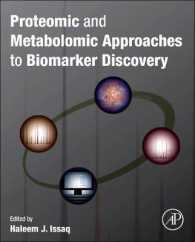Full Description
The topic of play is fundamental to understanding how children grow and learn. Play in Early Childhood Education Second Edition is an essential introduction to the theories behind this play and how it relates to children's development and learning. It enables students and educators to understand the complex learning theories, professional practice and selected government policies that focus on children's play and early learning. This user-friendly text also tackles the rapidly changing contexts where children are raised and educated, demonstrating diverse approaches to play-based learning and considering new insights and possibilities.Features:Includes a wide range of real life case examples; teaching examples; and reflections covering the birth to 8 years age range to illustrate theory in practiceExpert author team of early childhood academicsCross-cultural contexts - examines the power of play in facilitating young children's development and learning in many diverse contexts including Australia, Cambodia, Finland, Tanzania, Singapore and Hong Kong.
New to this edition:Revised to take account of recent significant national policy changes in early childhood in Australia (and in other selected countries) which focus on the interpretation and implementation of Early Years Learning Framework (EYLF) and the National Quality Standard - students will see direct links between play and these policy documents.Chapters have been re-organised and re-named to better match course content and to assist students' navigation, and understanding of key topic areas, including:developing early childhood curriculumassessing children including the use of learning storiesinquiry based learningICT and its use with young childrenfacilitating leadership in young childrenworking with infants and toddlersplay in the lives of Aboriginal childrenconsumer culture and its impact on young children's playlearning through science explorationliteracy learning through playurban spaces and play including play space in the virtual worldthe play-work interconnectioncurriculum development and play for children in Finland and other countries; guiding children's behaviour.Five new chapters:Chapter 2 - Early Years Learning: Implications for CurriculumChapter 3 - Assessing Children's Learning through PlayChapter 9 - Play and the Inquiring MindChapter 10 - Guiding Children's BehaviourChapter 12 - Play, Playing Along and Playing it Up: Understanding the Play of Aboriginal ChildrenThe use of ICT based play is covered more extensivelyUpdated with the latest research and referencesUpdated case studies to enable students connect theory to practical teaching situations.
Learning FeaturesSection openers & Chapter objectives: Explain the purpose and the content of each section and give readers a clear outline of what they will learn.Reflection feature: Asks students to pause and reflect on content they have just readMargin notes:These draw attention to key concepts/ideas, summarise content and highlight links to the EYLF. Case studies: Illustrate theoretical content through real examples depicting children to assist students relate their learning to practice. Chapter summary: Summarises key points of the chapter to guide readers review content covered.Key Concepts: In each chapter, 4-6 key concepts are defined and explained to enable students develop their vocabulary and understanding of ECE concepts. The new key concept icon identifies where each key concept is discussed in the chapter.Points of discussion and debate: Enable readers to unpack and discuss theories and their practical application.Annotated key references & Chapter references: Encourage further reading and research.
Contents
SECTION 1: PLAY AND DEVELOPMENT1.Perspectives on Play in a Changing World2.Early Years Learning: Implications for Curriculum3.Assessing Children's Learning through Play4.Real Play as a Matrix for Learning and Development in Toddlerhood. 5.Infant Play: How Interactions Build and Support Relationships SECTION 2: PLAY IN ACTION IN DIVERSE ENVIRONMENTS6.Enhancing Children's Competencies in Playful Learning7.Being and Becoming Leaders through Play in Early Childhood 8. The Influence of Consumer Culture on Children's Play9.Play and the Inquiring Mind10.Guiding Children's Behaviour11.Redefining Learning in Science through Children's PlaySECTION 3: FAMILIES, COMMUNITIES AND PLAY12.Play, Playing Along and Playing It Up13.Children's Play and Work: The Interconnected Contexts for their Learning14.Play, Learning and Communication15.Urban Play Spaces for Children 16.Techno-toys Learning and Play: Potentials and Pitfalls17.Building Intercultural Connections through Technology-based Play






